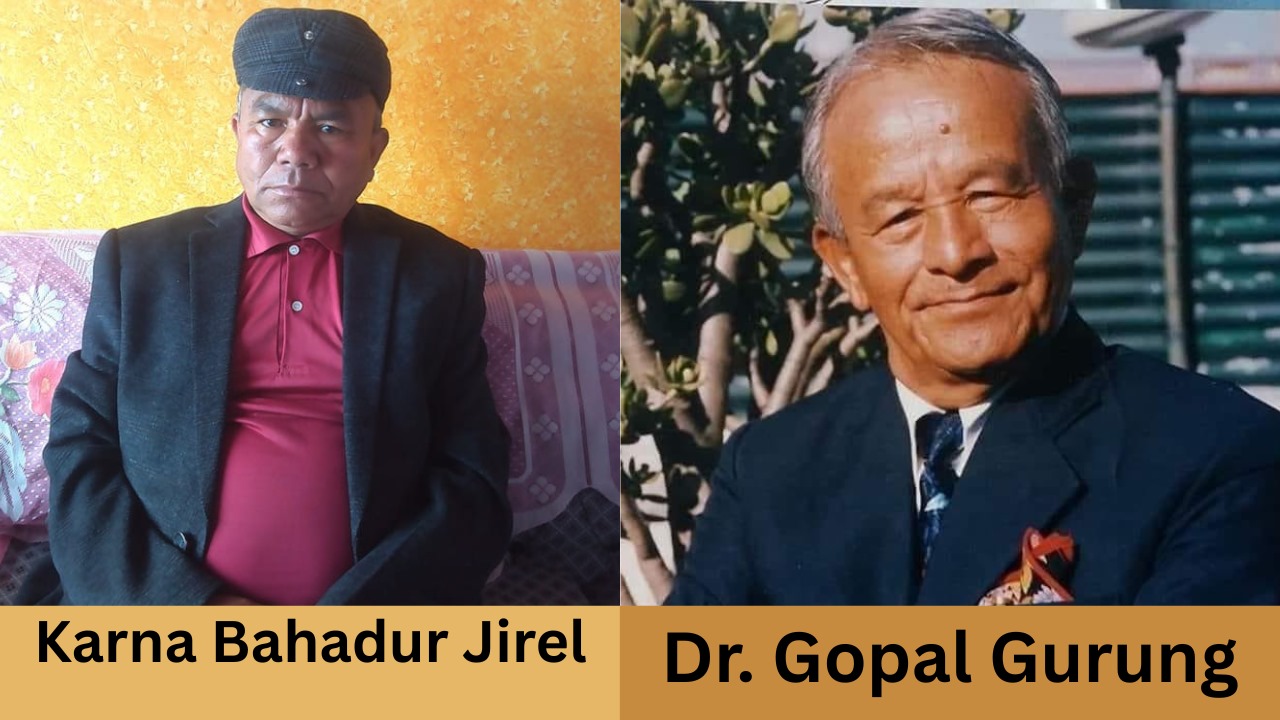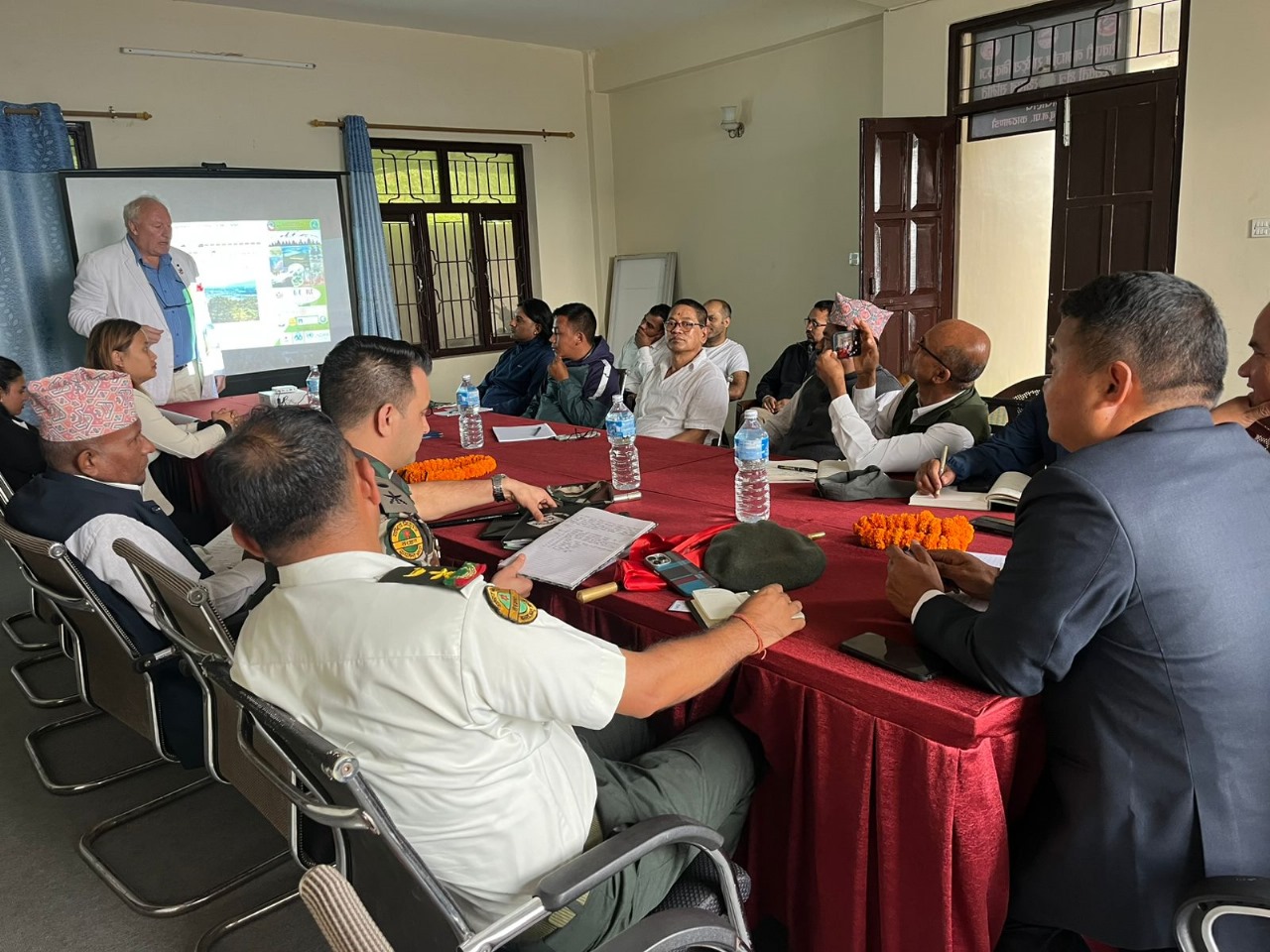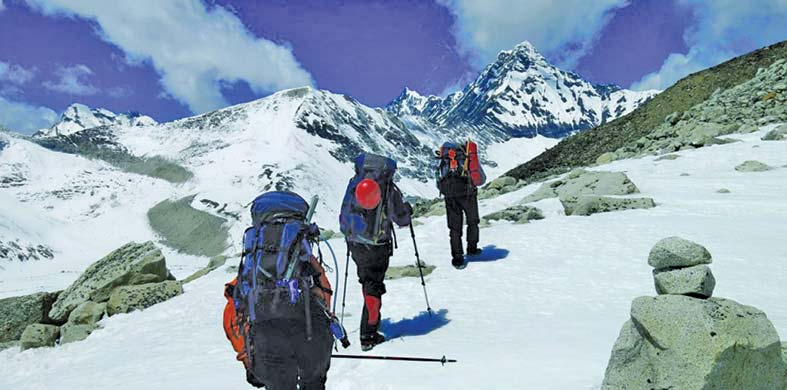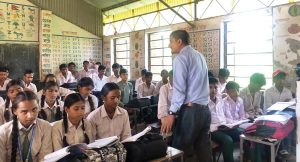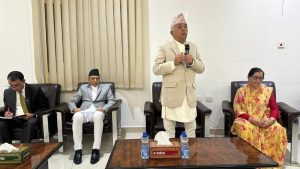Kathmandu, 22 Ashoj(Oct 8) (RSS): Nepal has a long history of traditional medical systems, in which Ayurveda, Unani, Homeopathy, Sowarigpa and other natural healing methods occupy a special place. These treatment methods have been adopted for many centuries and they have played an important role in the treatment of health problems. Ayurveda has been developed using herbs based on the cultural and geographical diversity of Nepal, which has helped to create many traditional medicines.
Unani medicine also entered Nepal through the Muslim community in ancient times and remained popular for solving various health problems. However, in recent times, the influence of modern medical system is increasing in Nepal. Due to this, there is a need for change in traditional medical methods. Acupuncture has been gaining popularity in recent years. The use of this method is especially seen in urban areas, where modern medical systems as well as alternative medical methods such as physiotherapy and massage are sought. Adopting a new approach in the health sector, some Nepali doctors and health workers have started to study intensively the usefulness and effectiveness of acupuncture. Because acupuncture can treat pain without drugs, it is believed to protect against the negative effects of long-term drug use.
Acupuncture is a treatment method that is almost two thousand years old. In this, health problems are treated with the use of needles in different energy channels called ‘meridians’ of the body. According to Chinese medical theory, when there is an imbalance in the flow of energy called ‘chi’ in the body, various diseases and health problems arise. Acupuncture helps correct imbalances and strengthen the body’s natural healing abilities by inserting needles into these channels.
This method has positive effects on nervous diseases, physical pain, stress, digestive problems, sleep problems, migraines, thyroid, hormonal imbalance, obesity, facial diseases, and other diseases. In particular, acupuncture has shown remarkable results in stress and pain management, which is why this medical practice has become popular worldwide in recent years. Acupuncture activates the body’s natural healing processes without drugs. This has the potential to reduce the need for long-term medication in people who use it.
The World Health Organization has proven the effectiveness of this method in the treatment of more than 100 diseases, pointing out the importance of acupuncture. Due to the organization’s recognition and research, this method has been widely practiced as an alternative medicine method in countries around the world. China is the birthplace of acupuncture and is most widely used here. Acupuncture is practiced in a different way in Japan, using the ‘Harigetsu’ method, while in South Korea, a blend of traditional and modern medicine is gaining popularity.
Likewise, its use in pain and stress management is increasing in the United States, and in Canada it is also included in health insurance. In Australia, it is particularly popular in chronic pain and pain management. In Germany, acupuncture is included in the modern medical system with insurance coverage, while in Britain, the National Health Service has recognized it as an alternative treatment method. In France, acupuncture is recognized as a formal medical practice, and in Sweden it is widely used for stress management and the treatment of chronic diseases. Acupuncture is also increasingly being used as an alternative medicine method in India and in recent years in Nepal, this method is becoming popular in both urban and rural areas.
Similarly, the popularity of acupuncture in neighboring countries such as Malaysia, Thailand, Vietnam, and Singapore is still attractive. In addition, scientific and medical researches have begun to investigate the effectiveness and validity of acupuncture. Acupuncture-related research has been published in various world-renowned journals such as Lancet, Nature, Shell. This method is not only limited to the treatment of health problems, but it has also proven to be useful in preventing diseases and improving overall health. Through its use, people experience improvement in physical, mental and emotional health.
Although the history of using acupuncture in Nepal is not long, its popularity has increased significantly in the last two to three decades. This medical method is believed to have entered Nepal as a result of cultural, educational, and health relations with China. There are still documents that were brought into Nepal during the construction of the Araniko Highway, mainly as a physical development. In the 1980s, the branch of acupuncture was opened in Veer Hospital and has a history of 17 years. Initially, acupuncture service was available only in limited places, but now this service is easily available in major cities of Nepal. It is widely used in Naradevi Hospital, the oldest and largest alternative hospital. Recently, many health institutions, hospitals, and individual clinics have included acupuncture as a treatment option. Acupuncture has been used since the ICU of Annapurna Neuro, Nepal’s leading neuro hospital, which may seem new.
The expansion of acupuncture in Nepal can also be seen in connection with medical tourism. Acupuncture services were started to be provided targeting foreign tourists coming to Nepal since the 2000s. Nepal’s natural beauty, mountainous environment, and ancient traditions of yoga and meditation make Nepal an attractive destination for physical and mental healing. Tourists looking for environmental peace and spirituality are beginning to see acupuncture as an excellent option for improving their physical and mental health. Acupuncture is becoming increasingly effective and popular as therapy is integrated with meditation, yoga, and natural healing methods. When a Brazilian tourist comes to Nepal to experience the traditional Indian medicine Ayurveda and Chinese medicine at the same time, it seems that acupuncture still has a lot to develop in the tourism sector.
Acupuncture in Nepal has given good results in various health problems. In particular, its accessibility in both rural and urban areas has attracted many Nepali people back to natural healing methods. Nepali doctors who have returned from studying in China have played an important role in incorporating acupuncture into the Nepali health system, but so far it seems that it has not become a topic of much interest from the government. Acupuncture has been proven to be effective in treating a variety of health problems. Research has shown that acupuncture can have a positive effect on pain management, stress and mental health problems, sleep problems, digestive disorders, and reproductive health, in particular. In pain management, acupuncture promotes the body’s production of natural pain-relieving endorphins. By improving blood flow to the muscles and nerves, it helps in the treatment of long-standing chronic pain, especially knee, back pain and migraine.
Similarly, in mental health problems, acupuncture helps reduce stress and anxiety, which appears to be effective in improving sleep quality. Similarly, acupuncture is effective in improving reproductive health and managing menstrual problems in women. Its use is increasing especially in women who want to have children. After its effectiveness has been proven, it has become popular in Western countries as well, and its popularity is still increasing due to the belief that it can solve long-term problems without any side effects of traditional medicine.
In addition, the credibility and reach of acupuncture has increased as famous people have started sharing their experiences after using it. Since various hospitals and health centers have started providing acupuncture services, it has become easily accessible, which has added strength to its popularity. With the development of acupuncture services in Nepal, one of the major problems in formal education and training is the lack of a specific college or university for acupuncture education within the country. Lack of necessary infrastructure and curriculum development to provide quality education to students has become a big challenge. Due to the lack of recognition of formal education for acupuncture practice, many Nepalese students have to study in countries like China, South Korea and Japan, which adds economic and cultural challenges.
The certification process of experts who have received education abroad is still unclear and complicated. Doctors who have studied abroad have to get stuck in the process for a long time to get registered and licensed in Nepal. This area has not been managed since the process of concretely evaluating their competence and efficiency during certification is not clear. This has created an obstacle in providing effective services by qualified doctors who practice acupuncture.
There is a need for the Ministry of Health and related agencies to establish concrete standards to manage acupuncture. It seems necessary to develop a simple, fast and reliable process to recognize the qualifications and experience of doctors who have returned from studying abroad. It will encourage the quality practice of acupuncture by bringing policy clarity and will help to advance this system institutionally. In addition, priority should be given to the development of education programs internally, which can contribute to the production of skilled manpower within Nepal.
Until now, due to the lack of any special law or regulation to legally recognize the practice of acupuncture, various challenges have appeared in the quality and transparency of this method. Due to the lack of legal structure, there has been a problem in ensuring the certification, qualification standards and service quality of the persons or organizations providing acupuncture services. Without a legal basis, there is potential for abuse of this system, which can put consumers at risk of fraud and erroneous treatment.
Legal recognition of acupuncture as a medical service has become imperative. Only a legal structure can ensure the formality and credibility of acupuncture. It will make the process of qualification, registration and licensing of practitioners transparent and organized, which will help to increase the quality of acupuncture services and spread its popularity among the general public. It seems that the Ministry of Health should reform policies by keeping acupuncture on the same level as Ayurveda, homeopathy and other alternative medical methods. For this, it is necessary to prepare a structure of integrated education, practice, and research. If acupuncture is officially included in the alternative medicine system, there will be an opportunity to encourage research into this method, streamline the training of specialists, and provide quality services to the public.
There are still some misconceptions about acupuncture among the general public. Most people see it only as a traditional or religious treatment. As a result, its real science-based aspects and proven effectiveness have been ignored. Some people tend to consider acupuncture as not scientifically proven and only as an alternative treatment, but in recent years, studies around the world have been confirming the scientific basis of acupuncture, especially its positive effects on pain management, stress relief and other health problems.
Due to lack of public awareness, this misconception still persists. Extensive public awareness programs are needed to improve this. It can bring the scientific basis of acupuncture and its effectiveness to the general public. Due to the lack of publicity and correct information, the real benefits of this medical system are not understood. Proper training of acupuncture service providers, even at the local level, is extremely important. It should be established that quality services should be provided only through trained specialists. Patients are at risk of receiving the wrong service due to people providing services without training and certification. The quality of service can be ensured by making it mandatory that only qualified experts provide this service. This will help to spread acupuncture widely and convey its correct information to the general public.
Future prospects and necessary improvements
The future of acupuncture in Nepal looks really bright, as it is gaining popular acceptance as a natural and alternative medical method. Acupuncture can play an important role in the prevention, treatment and rehabilitation of chronic health problems. Understanding its effectiveness, it is essential to develop policy reforms and institutional structures. By legalizing the practice of acupuncture in Nepal, developing standards of education and training, and producing qualified specialists, collaboration between the Ministry of Health, medical institutions and experts is essential.
It is important to improve public awareness and communicate the correct information, so that the general public can understand the scientific aspects and medical benefits of acupuncture. The government and private sector should take initiatives to extend this service to rural and remote areas as well, so that the people of all urban and rural areas can get the same service. This will increase the accessibility of acupuncture and help in the stability and popularity of this method. (The author is employed at Blue Lotus Health Home)









